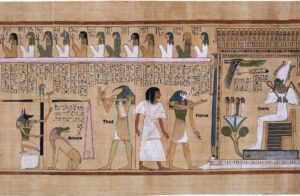The awning in history: luxury or necessity? Which one of these 2?

The awning in history
Since the beginning of its history, man has felt the need to protect himself from the sun’s rays with the awning.
Let us therefore discover the awning in history
Over the years, very rudimentary artifacts have been found from the Neolithic period to the ancient Egyptians and the Roman Empire. In fact, the comfort of shade has always been desired by humans, especially with the development of civilizations and prosperity.
As early as the Roman Empire, Vitruvius wrote in his 10 Books on Architecture about the importance of thermal and light balance in buildings.
The term Tentorium derives from military tents. The term Velarium, on the other hand, indicated the veil placed over the stands of the Colosseum. The purpose of the veils was to protect spectators from the summer heat on game days.
The words TENT and SAIL derive from these terms.
As a consequence of the industrial revolution, techniques, such as looms and string mechanisms, were developed. These allowed automatic unwinding of the awning.
This process allowed the construction of larger tents to cover larger spaces.
Awning fabrics
In the Roman period slaves were in charge of weaving textiles.
Later the textiles began to be produced by traders in Italy. It thus became a prominent industry especially in Florence in the medieval period.
In the 1500s, windows made of glass and textiles began to be produced.
Textiles were once used solely to clothe people, then became useful for solar shading and furniture. Fabrics were embellished with gold and silver.
In the 1700s, picket tents were invented. These, in fact, could be rolled up with a cable to create shade or increase lighting.
Consequently, curled curtains and Dutch curtains were introduced, functioning almost like shutters.
From the 1800s textiles were innovated with brighter colors to lighten rooms up and add elegance.
The more recent invention of weather-resistant fabrics made it possible to use awnings during winter time, as well as summer.
Climate zones
Depending on the climate zones, there are different needs for protecting buildings both in summer from the heat than in winter from the cold. This is to take advantage of the light even on cold or dreary days.
In North Africa, for example, grid screens were used on windows as sunscreens. Instead, in European royal palaces, draperies were favored. These also had a furnishing function.
Madame Pompadour lent her name to the “marquee”, which is a tent placed in gardens to create shaded areas for events or celebrations.
Sunscreening solutions
Today there are a variety of solutions depending on the outdoor space of the building to be sunscreened.
Awnings are produced in a variety of models for shielding windows and French doors, whether they are in public or private areas, such as terraces or gardens.
For apartments with windows, lacking of outdoor space, vertical drop blinds can be used. These take up little space and can completely shield from the sun letting the light in, like, for example, folding arm awnings, which are perhaps the most common in the market.
Hotels and resorts also use these types of awnings, because they can cover large square footage and resist the wind force.
Dutch awnings, on the other hand, are very common in shops and various other commercial establishments. This is because, with their compact and attractive shape, they decorate store entrances and can also be customized with logos and lettering.
More recently, pergolas for small and large gardens, capable of creating true protected islands, have become very popular. These use mainly remote control systems or via app from a smartphone or via tablet. Also awnings can be fully automated with electric motors, which can also be controlled from a smartphone.
Awnings as furniture
Today, awnings follow the tradition of royal courts and are often used, not only as sunscreens, but also as furnishing items.
The quality of metal accessories is high. Plastic covers over screws and mechanical parts create elegant finishes. These features, together with fabrics of 1,000 different varieties, enable the creation of true relaxation areas that are aesthetically beautiful and elegant.

